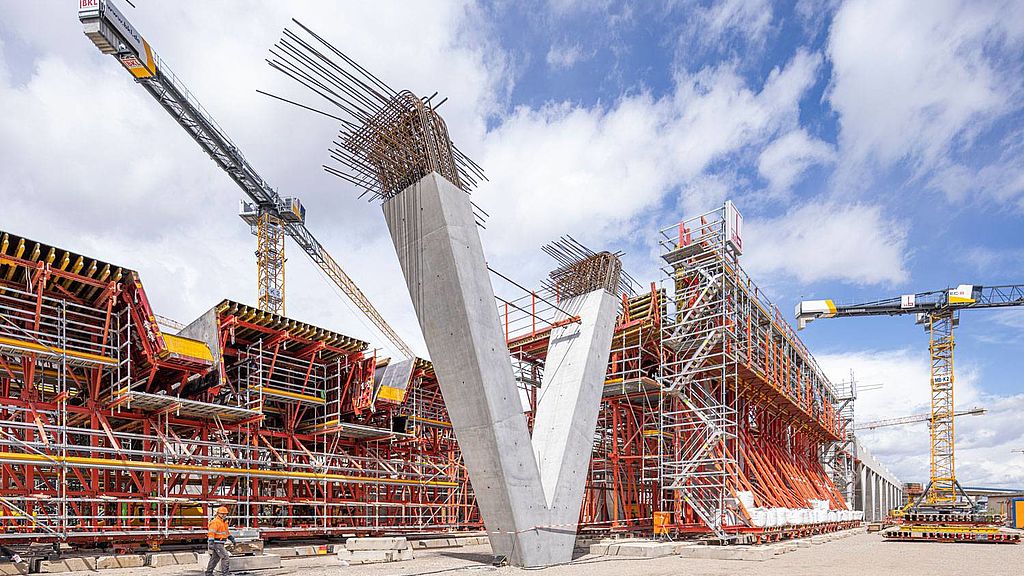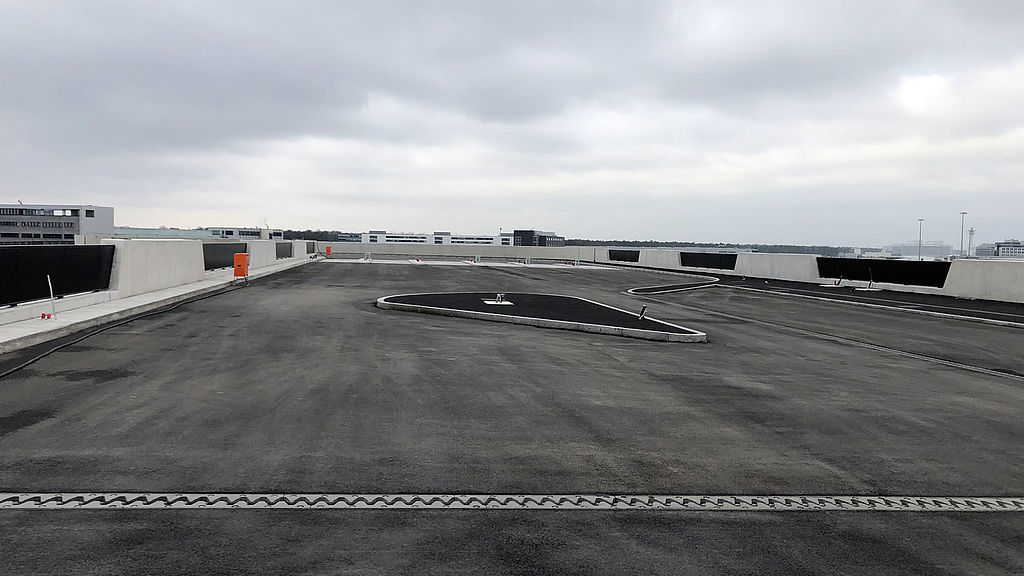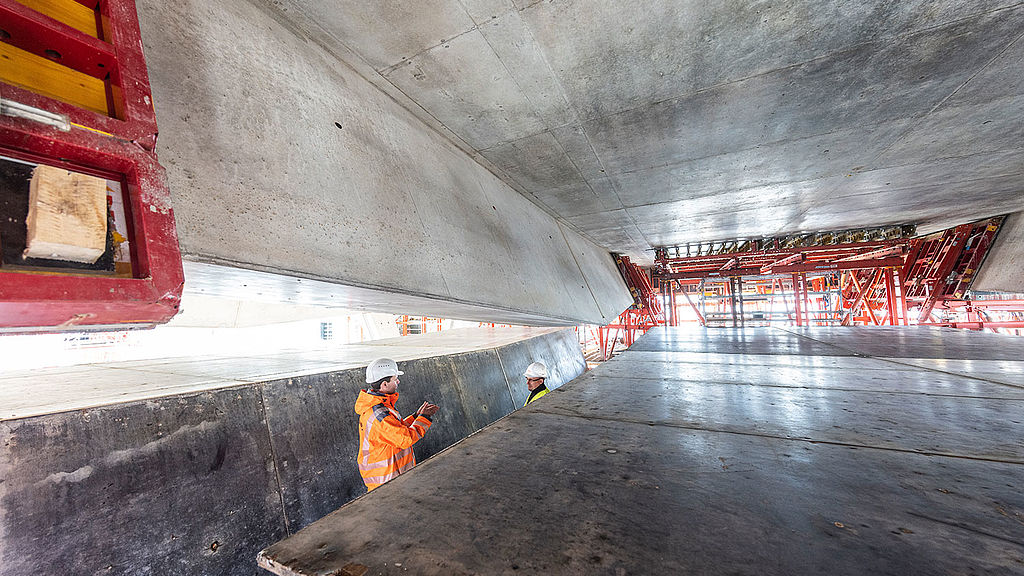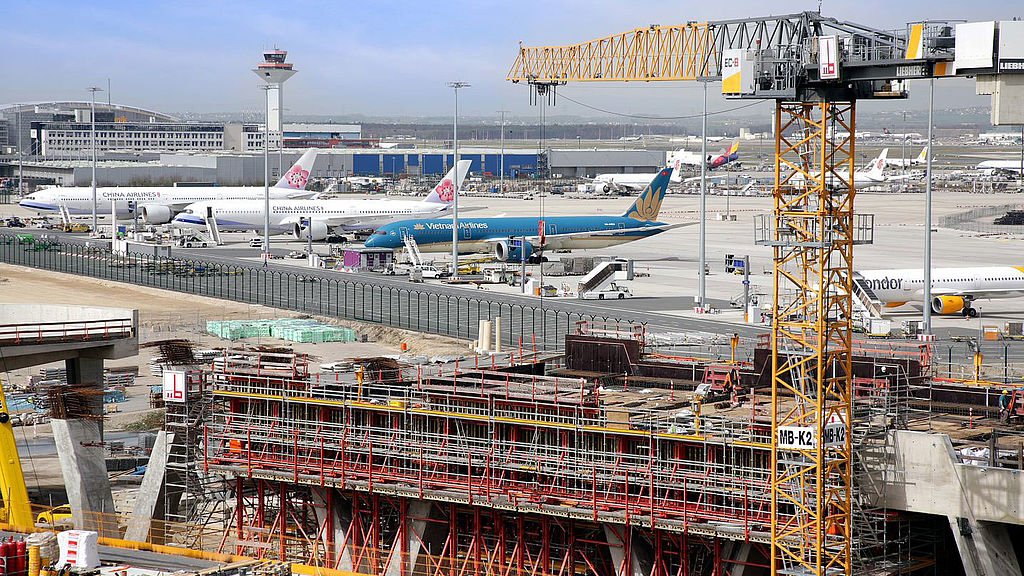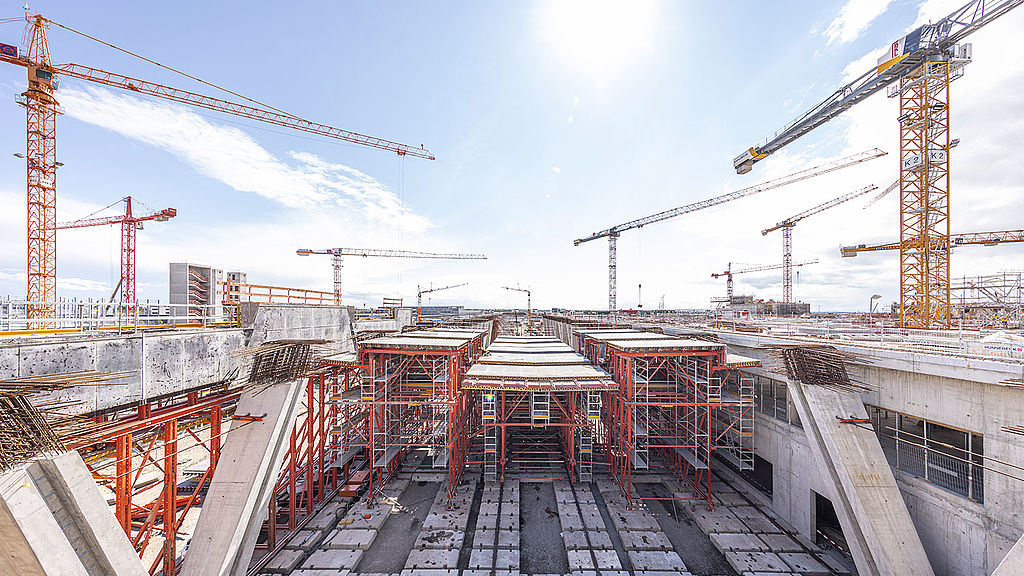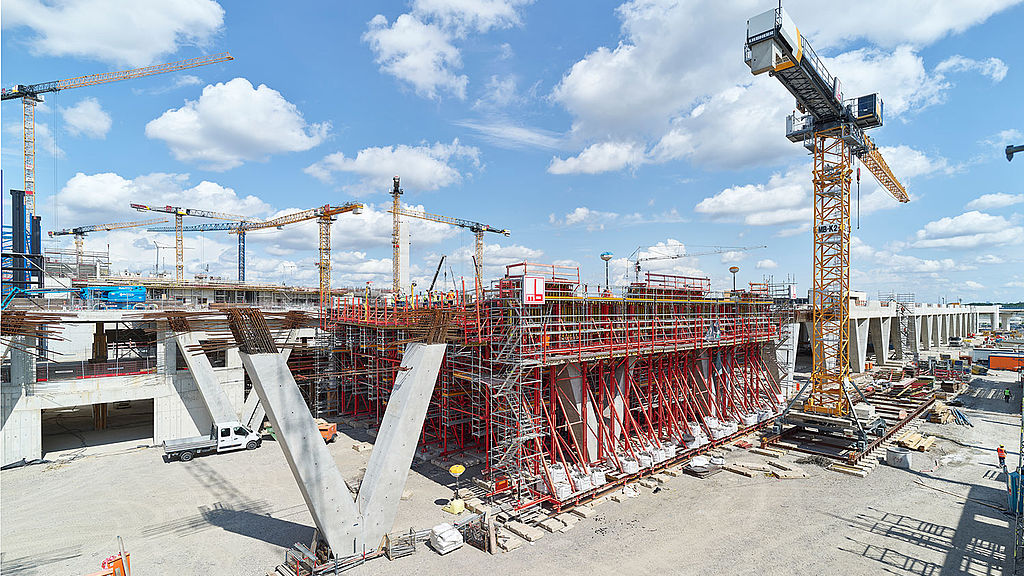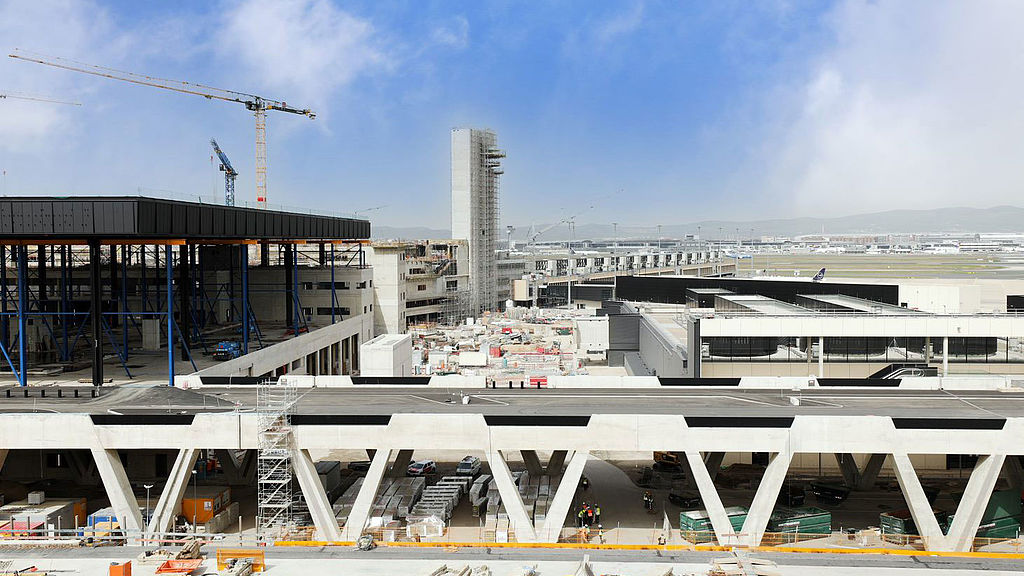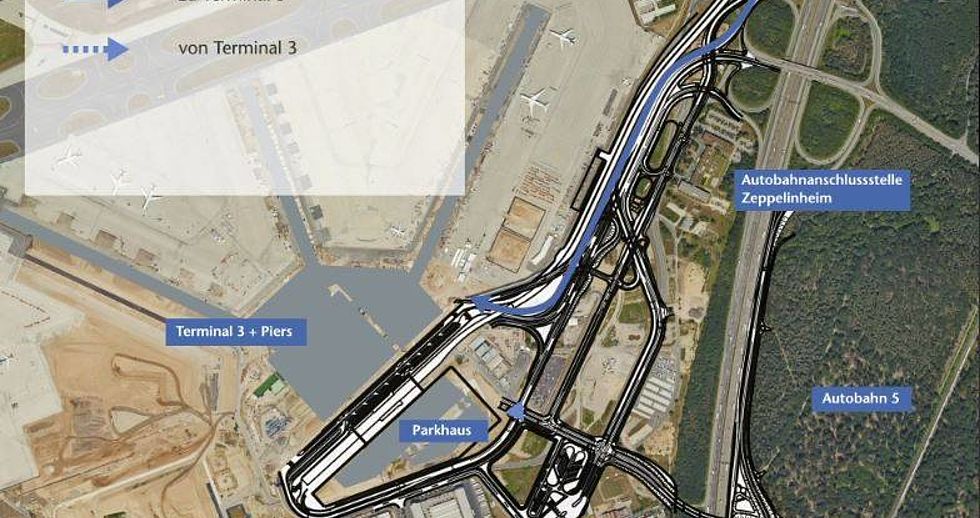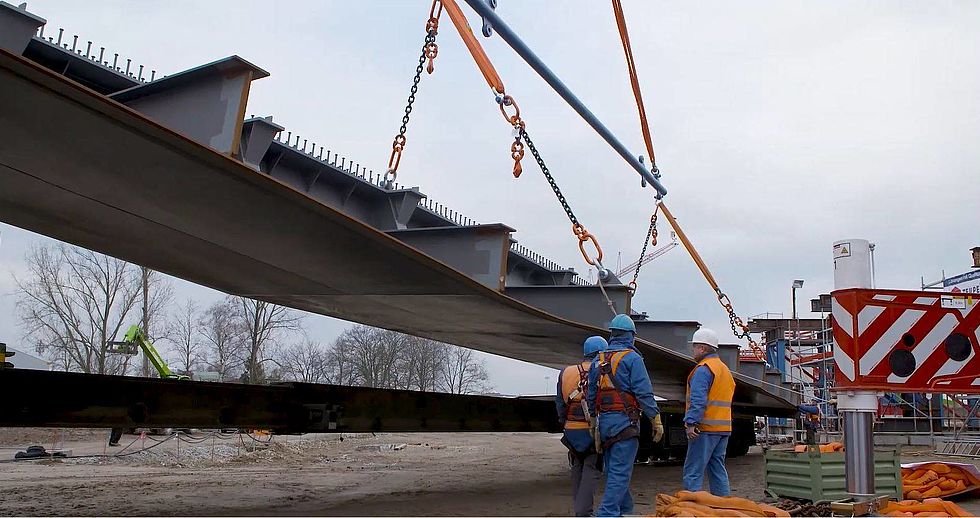Access for passengers arriving by car
The drive-by platform of Terminal 3 was completed and passed inspection in February 2023. Measuring 500 meters long by nearly 30 meters wide, this bridge-like structure will be used by travelers to reach the terminal by car. Work to build it began in mid-2019 by driving supporting piles 13 meters deep into the ground. This was a challenge for the construction workers: they had to achieve centimeter precision using equipment that weighed up to 155 tonnes. The piles were topped by caps on which the 70 supports for the platform would rest. Of these, 56 were installed in a straight line stretching from east to west. In addition to holding up the platform, they contain cavities for installing pipes, e.g. for wastewater.
V for Very Special Requirements
The characteristic V-shape of the supports posed special requirements that the structural engineers needed to take into account when drawing up the plans. Before giving the go-ahead, they therefore began by testing a full-size trial version to see if their plans could actually be put into practice. The starting gun for making the V-shaped supports didn’t go off until the first quarter of 2020. As soon as a few of them had been finished, preparations for creating the superstructure began. It was necessary to pour concrete in a total of fourteen 36-meter-long sections so that all travelers and visitors would later be able to conveniently access the main terminal building. (Here you can see how the V-shaped supports were created).

Customized formwork wagons
An elevated drive-by platform lets passengers arriving by car or taxi go straight to the entrance of the new Terminal 3 on the departures level. It measures more than half a kilometer long by three meters wide. The concrete for the individual sections was poured in shallow formwork basins. After it cured, the formwork was removed and reused for another section. The construction workers used so-called formwork wagons for this, in other words huge mobile support structures integrating all relevant parts for a section. The company of PERI supplied them for Terminal 3.






